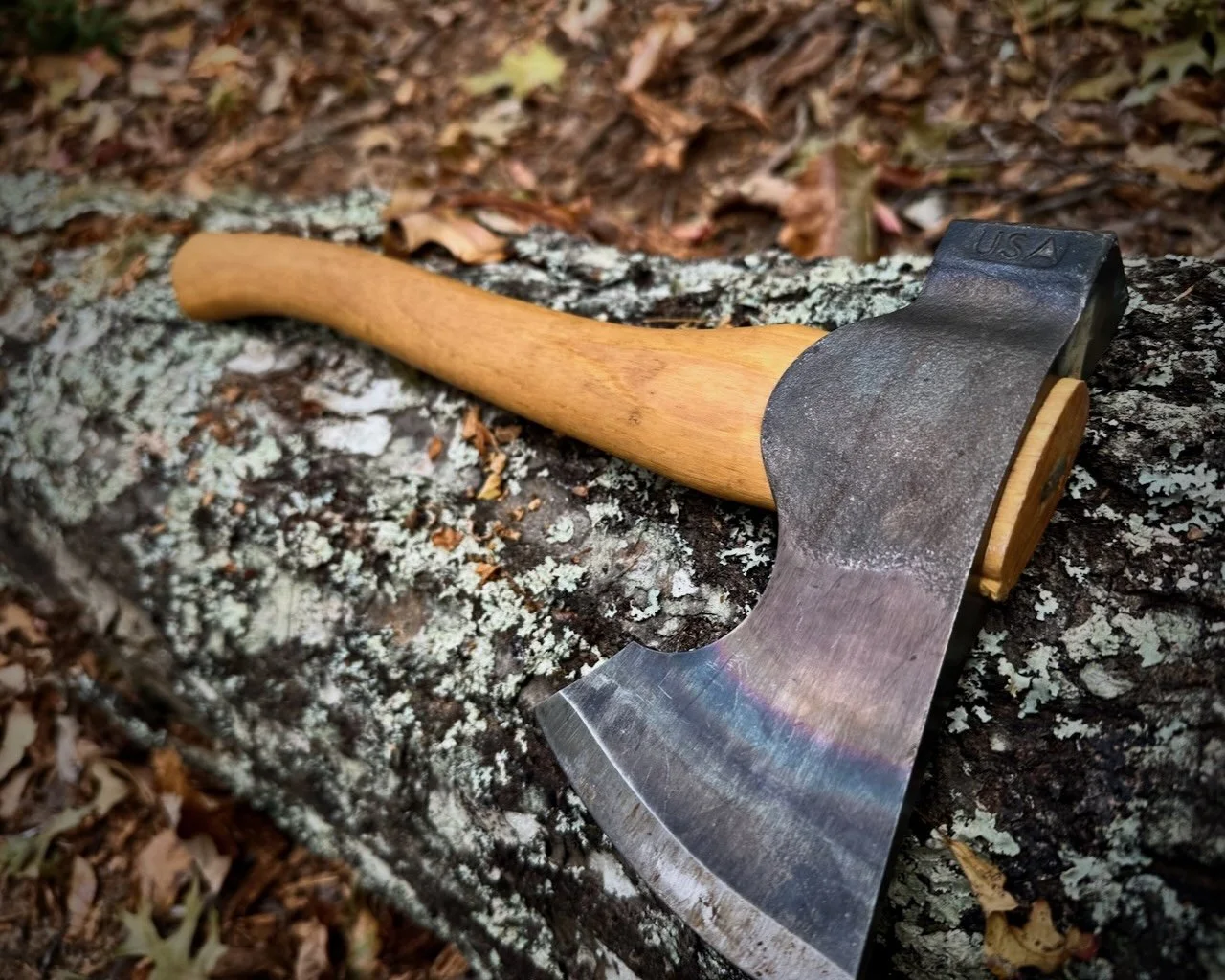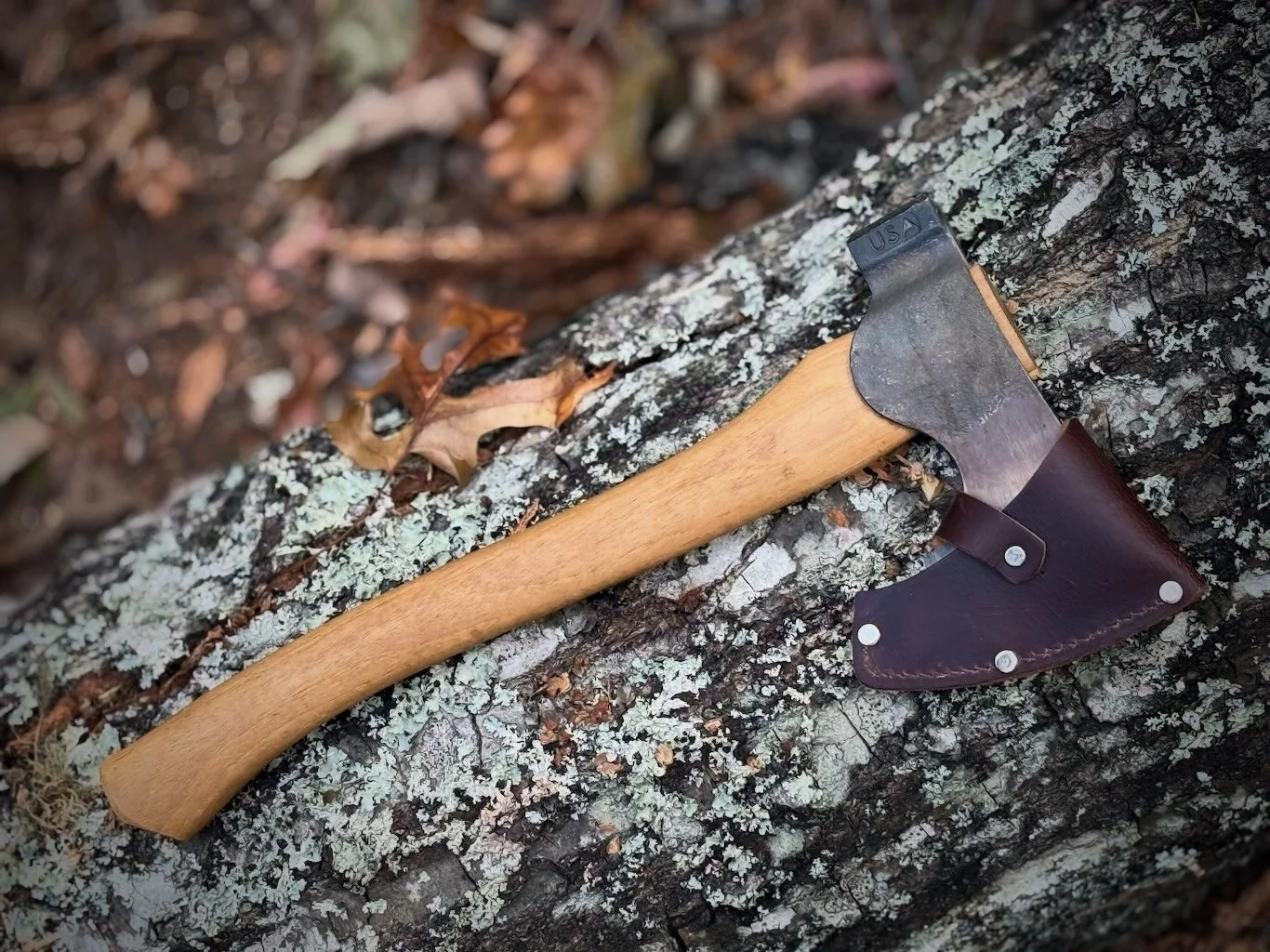Council Tools Wood-Craft Camp Carver Review
Today, I am going to show and tell you why I love this small axe from Council Tool.
For those who prefer videos, I have also made the following YouTube video. It does not contain all the information that this article does, so it is worthwhile to read this article as well.
I have a long history with axes and have probably used them a lot more than the average person. In a previous life, I used to design and make custom knives. But, I just didn't wake up and start making knives one day. It was a progression that involves axes.
I started with a small grinder and buying every knife I liked and could afford. I used the small grinder to sharpen, change bevels and modify grinds on those knives. Then, I stepped into a bigger knife making grinder. Since this was a time when not many quality axes were being made new, I refurbished vintage axe heads. I would search for heads, clean them up, put the profile on them that I like, re-handle them and use them or sell them. I have been exposed to a great many different axe head profiles as well as played with the geometry of the cutting edge to get the performance I wanted.
It is a huge relief to not have to do that anymore, and to be able to buy a well made axe and either start using it right away, or just make small modifications to start using it.
Now, if I were to choose "one axe" and grab to take with me just about anywhere, the criteria for that axe does not match this one. In general, I find something in the "boys axe" category to be the best all around axe to use. Something with around a 2lb head and 24" to 28" of handle length. And, I have done just that for years and years. The specific axe I like to use is also by Council Tool and is their Velvicut 2.25lb Premium Bad Axe Boy's Axe.
An axe of this type is large enough to do some serious work easily, such as making a raised bed in winter weather, or making a Swedish fire lay in cold weather. Yet, it is small enough to handle chopping up kindling into fine pieces, and is just an all around good tool.
While camping in the spring in the Smokey Mountains, I made this same axe decision just like I had done for years. One of my camping setups is an 18' Tentipi Tipi. It is really simple to setup by placing 8 stakes in the ground, inserting the center pole, and then tensioning the sides. There are several smaller stakes that go on the inside to make sure the interior all buttoned up. Because of the tension on the outer walls, the outside requires a decent stake, more than a tarp or a small tent, and is one of the reasons I bring an axe. Depending on the ground type, the axe can come in pretty handy for the interior stakes as well. With the sloping walls of the interior, a long handle can be pretty cumbersome.
I can be a slow learner sometimes, but it finally hit me that a small axe would have worked great on a trip like this. It could handle the outer and inner stakes well, as well as all my fire prep needs, and that is all I really needed. I wasn't making a shelter or chopping insane amounts of wood on a trip like this.
Of course, I wasn't going to just buy and old small axe, because I already had several at home. I just decided to keep my eye out for something that fit the bill extremely well.
In the fall of 2022 I was at the Georgia Bushcraft Gathering, and came across this axe for sale. Instantly, I knew it was what I was after.
The overall length was nice and handy. The head was well balanced with the hammer poll, and it was even hardened specifically for the hammer task. Now, I am not going to go crazy with the hammer poll end, but knowing it was intended for this use made me confident that it could handle a few stakes. The handle and steel are very premium and overall it is just a high quality axe.
The cutouts on the head for choking up are far better than I have used on any other axe pattern, and the rounding that was done is a very nice touch. It makes it very nice for choking up on and with the smaller axe has far more control than a larger axe.
The head even has sharpened corners for using a fire steel. This is one of my requirements in a belt knife anyway, and if you are going to carry a tool, it might as well have as many uses as possible.
The axe came very sharp as it is, but I have used it a lot, so of course it has been sharpened. The only other thing I have done to this axe is a handle treatment. I did some light sanding. Not enough to change the shape, just to make sure it was going to end up buttery smooth. Then, I added a few coats of boiled linseed oil. To finish it off, I rubbed the handle with pure bees wax, and then used a hair dry to melt and rub it in. Overall, it creates a good handle finish that is great to hold, semi sealed, and yet is able to breathe, unlike a hard slick varnish.
Even though I have all the supplies, one thing that I really don't enjoy doing is making an axe mask. So, I am really happy that this one came with a high quality one. It is made of nice leather and held in place well. Neither too tight, nor too sloppy. It also has a welt in between leather layers that is often forgotten. A mask without a welt is often the first failure point because the sharp axe edge will go into between just two layers of leather, and either cut stitching, or have your edge impact metal.
A little tip, if you do end up using the hammer poll is to remove the mask. Have you seen the old bushcraft drawings where they show splitting wood with the wood stuck on the bit, and then striking the poll on a log? That is because the sudden impact creates force on the log that was previously moving and can split it. While it doesn't weigh as much, if the mask is left in place, it will eventually get beat up as well, and I have ruined them this way. Best to unsheath the axe, do what you are going to do, and then replace the mask.





